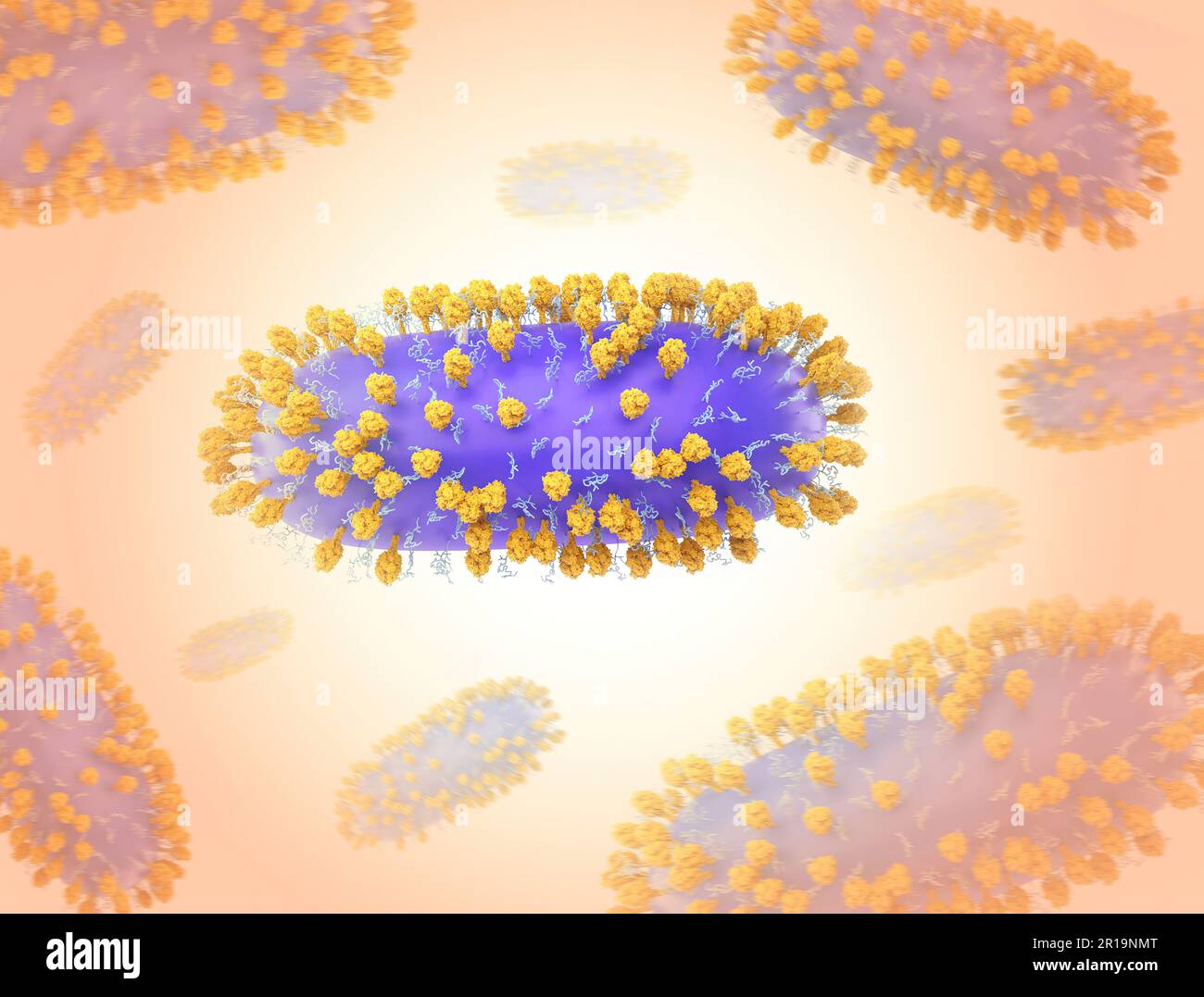Human Respiratory Syncytial Virus (RSV) Creative layout featuring 3D renderings of respiratory syncytial virus (RSV), a common contagious virus that infects the human respiratory tract. Credit: NIAID

Image details
Contributor:
American Photo Archive / Alamy Stock PhotoImage ID:
2R19NMTFile size:
83.2 MB (1.5 MB Compressed download)Releases:
Model - no | Property - noDo I need a release?Dimensions:
6190 x 4700 px | 52.4 x 39.8 cm | 20.6 x 15.7 inches | 300dpiDate taken:
26 October 2022Location:
USMore information:
This image is a public domain image, which means either that copyright has expired in the image or the copyright holder has waived their copyright. Alamy charges you a fee for access to the high resolution copy of the image.
This image could have imperfections as it’s either historical or reportage.
Respiratory syncytial virus (RSV), [a] also called human respiratory syncytial virus (hRSV) and human orthopneumovirus, is a common, contagious virus that causes infections of the respiratory tract. It is a negative-sense, single-stranded RNA virus. Its name is derived from the large cells known as syncytia that form when infected cells fuse. RSV is the single most common cause of respiratory hospitalization in infants, and reinfection remains common in later life: it is a notable pathogen in all age groups. Infection rates are typically higher during the cold winter months, causing bronchiolitis in infants, common colds in adults, and more serious respiratory illnesses such as pneumonia in the elderly and immunocompromised. RSV can cause outbreaks both in the community and in hospital settings. Following initial infection via the eyes or nose, the virus infects the epithelial cells of the upper and lower airway, causing inflammation, cell damage, and airway obstruction.[2] A variety of methods are available for viral detection and diagnosis of RSV including antigen testing, molecular testing, and viral culture. The main prevention measures include hand-washing and avoiding close contact with infected individuals.[5] In May 2023, the US Food and Drug Administration (FDA) approved the first RSV vaccine, Arexvy (developed by GSK plc), for adults aged 60 and older. The prophylactic use of palivizumab or nirsevimab can prevent RSV infection in high-risk infants. Treatment for severe illness is primarily supportive, including oxygen therapy and more advanced breathing support with CPAP or nasal high flow oxygen, as required. In cases of severe respiratory failure, intubation and mechanical ventilation may be required. Ribavirin is the only antiviral medication licensed for the treatment of RSV in children, although its use remains controversial.